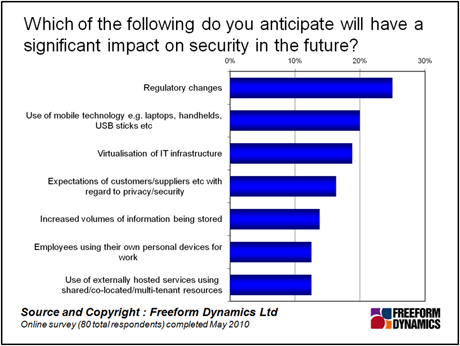The problem with building foolproof systems, so the saying goes, is that the world seems to generate a better class of fool. This seems to be particularly true with systems charged with managing security.
In the inseparable troika of policies, process and people, getting to grips with the first two is (almost) easy as long as they are allocated sufficient time. But even if policies and process are done right, it is the people that provide the unpredictable, inventive and zany behaviour that is enough to turn any security manager’s hair white.
So what are the key ingredients for putting in place a robust and effective security system that happens to be useable in the real world? The key is recognising that the main limitation will be based on the behaviour and culture of the employees. Our research shows that IT security is taken seriously by both IT staff and IT management, although it could do with more commitment from senior business management. But it also shows that the general workforce has a casual disregard for IT security. IT is not, and should not be, a main area of expertise for these people – but that can’t be seen as an excuse for paying IT security insufficient attention.

If the workforce isn’t going to take security seriously, does this mean we should just lock everything down as tightly as possible? However tempting this may seem, it is unrealistic in the real world. No solution can ever provide 100% security, and if we were to take that approach, staff may potentially lose productivity, or be tempted to side step security for fear it would get in the way – both factors which could encourage the development of a better class of fool.
The key is to balance the risk, investing where the biggest returns can be made to get good enough security that can be monitored and managed and exceptions dealt with. To this end, about the single most important thing that can be done to improve IT security is to recognise the imperfections inherent in the workforce, and to try to change both culture and behaviour. Having a documented IT security policy that is simple enough and clear enough for employees to understand is an important starting point, as it provides a framework for the company to base culture and behaviour around.
To implement security policy successfully, regular and comprehensive training is required. You can compare it to the situation on road safety. We trust the general population to control potentially lethal equipment in public places, by training them and giving them a driving licence only once certain driving manoeuvres have been successfully completed.
Good theory, perhaps, but our research also shows that in contrast to the situation of compulsory training and testing for driving licences, the current state of play around training workforces about IT security is not satisfactory at all. And therein lies the rub, to paraphrase Will Shakespeare. No matter how much we invest in systems, without tackling the human element we cannot hope to really get on top of security. Providing regular (at least annual) training and testing to ensure that employees are aware of security will start to show definite results.
IT security in this context extends beyond merely using computers, but also to overall behaviour. If we equip people with mobile phones, laptops and other equipment, they will use such devices, often in very public places, and in scenarios involving sensitive information. People think nothing of discussing bids, problems or HR issues on the phone, on a train or in an airport lounge. Others are happy to open their laptop and prepare a presentation or pitch or update a project plan, without a care as to who may be sitting beside them. Educating the workforce to understand the security context of their work is very necessary, but also a tough nut to crack.
So, will training alone be sufficient to tackle security in the general workforce? Looking back to the driving licence analogy, the answer is a resounding ’no’. Driver standards are variable, with some appalling behaviour not only in new drivers, but in seasoned drivers too. Ongoing monitoring is required, usually provided by the police, with punishments for infractions such as speeding or bad driving handed out by the courts. And in cases of blatant disregard for the rules, drivers may have their licences revoked or be required to attend refresher courses. The same is true for IT security; tools can be used to monitor and manage security and to flag exceptions for further actions such as re-training or disciplinary procedures.
With all this in mind, we pass it over to you to tell us just how good evolution is at breeding ever better fools and how you try to keep them in check.
Content Contributors: Andrew Buss
Through our research and insights, we help bridge the gap between technology buyers and sellers.





Have You Read This?
From Barcode Scanning to Smart Data Capture
Beyond the Barcode: Smart Data Capture
The Evolving Role of Converged Infrastructure in Modern IT
Evaluating the Potential of Hyper-Converged Storage
Kubernetes as an enterprise multi-cloud enabler
A CX perspective on the Contact Centre
Automation of SAP Master Data Management
Tackling the software skills crunch